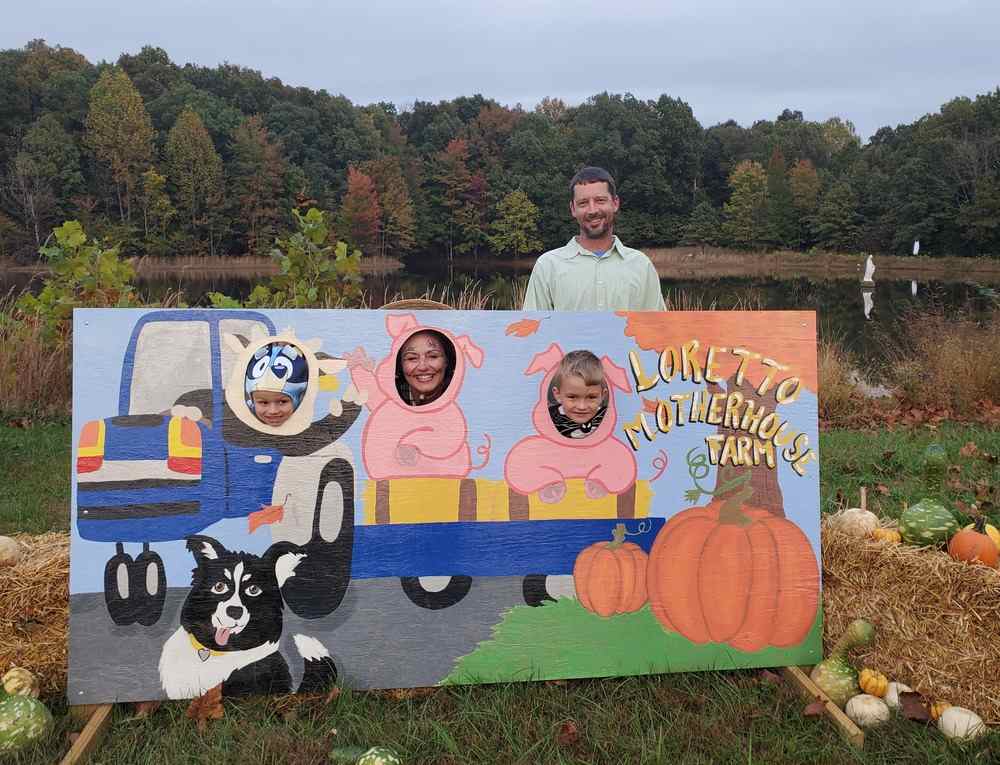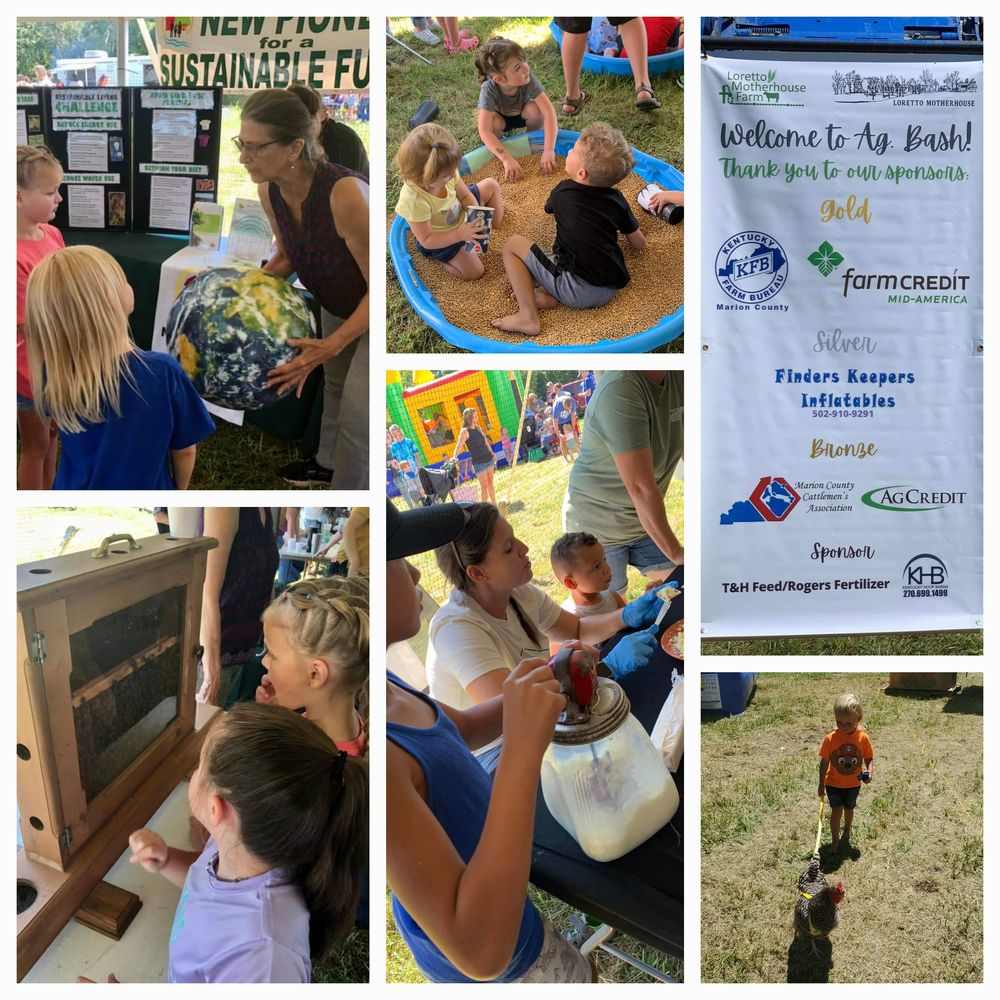Loretto Motherhouse Farm Works to ‘Care for our Common Home’
Posted on September 2, 2022, by Loretto Community

Photo courtesy of Angela Rakes
The Loretto Motherhouse Farm, formerly St. Stephens Farm, has been a productive farm operation since at least the late 1700’s, before the Sisters of Loretto were organized. In its earliest days the Farm provided sustenance for those who lived and worked here. Over time the Farm operations have evolved. At various points, the Farm has produced sheep, pigs, award-winning dairy cattle, beef cattle, chickens, table vegetables, orchard fruits, vegetable plants from a greenhouse, organic produce, grain corn, soybeans, wheat, tobacco, hay and other farm products. This evolution has been in response to the changing needs of the times, availability of laborers, and varying community interest and input in the Farm and its management.
In the late 1900s the Farm began a transition away from sustenance farming to a more commercial farming system of grains and cattle. Food to supply the campus was purchased from large distributors, while the Farm transitioned away from local food and instead shipped its products. The Farm is now, in many ways, transitioning back. Commercial grains like corn and soybeans are still grown, but in more environmentally friendly ways that can be used as learning tools for surrounding farmers. The Farm has returned to growing local food and is sourcing products from other local farmers. The Farm is home to about 120 cattle to supply the grass-finished beef program, 1.5 acres of sweet corn and 2 acres of pumpkins. The beef, sweet corn and pumpkins are sold to the local public as well as here on campus in the dining room for the corn and beef, and as outdoor decoration for the pumpkins.

Photo collage courtesy of Angela Rakes
The Farm currently consists of 789 contiguous acres (1.24 square miles). Of these 789 acres, about 300 are native hardwood forest, 200 are cropped annually, 200 are perennial pastures for livestock grazing, 70 are in dedicated conservation programs/projects and 10 are lakes and ponds. The remainder is the campus and buildings. Although it seems simple to categorize the acres into clear boxes of “perennial pastures” or “cropped annually,” the Farm is managed from a blank slate approach. For example — in 2012 many acres that were annually cropped were enrolled in the USDA Farm Service Agency Conservation Reserve Program (CRP). One field that many know as “Little Ireland” was planted in hardwood trees. This tree planting has not produced the tree mass to be a healthy hardwood forest, but does have several healthy trees. We are now implementing plans to convert this field into a silvopasture. This will be an area where we are able to grow forages under the sparse canopy of trees to feed livestock. The trees, the forages, the livestock and Earth will all benefit from the symbiosis of this production system. It will, however, be difficult to decide how to categorize those 16 acres.
The Loretto Motherhouse Farm receives guidance from the Loretto Motherhouse Farm and Land Management Committee. The three goals that guide the work of the Farm are: 1. to protect undisturbed spaces, 2. to regenerate degraded spaces and 3. to mitigate and reduce carbon emissions.
In Laudato Si’ (“On Care for Our Common Home”), Pope Francis writes, “We are not God. The earth was here before us and it has been given to us. This implies a relationship of mutual responsibility between human beings and nature. Each community can take from the bounty of earth whatever it needs for its subsistence, but it also has the duty to protect the earth and to ensure its fruitfulness for coming generations.” (#67. Chapter: The Gospel of Creation)
We seek to live humbly on land made good by its Creator. We accept the privilege to live in responsible relationship with the land and with all of life. We commit ourselves to being shaped by the beauty and harmony of the Universe. To accomplish these broad goals, the Farm and Land Management Committee has identified four pillars of our work: Climate Change, Localization, Racial Justice and Education. Moving into the future, learning and healing will be at the forefront of our work. We are committed to continue learning ourselves, teaching others, and healing the land and community through our work with localization, racial justice and combating climate change.
